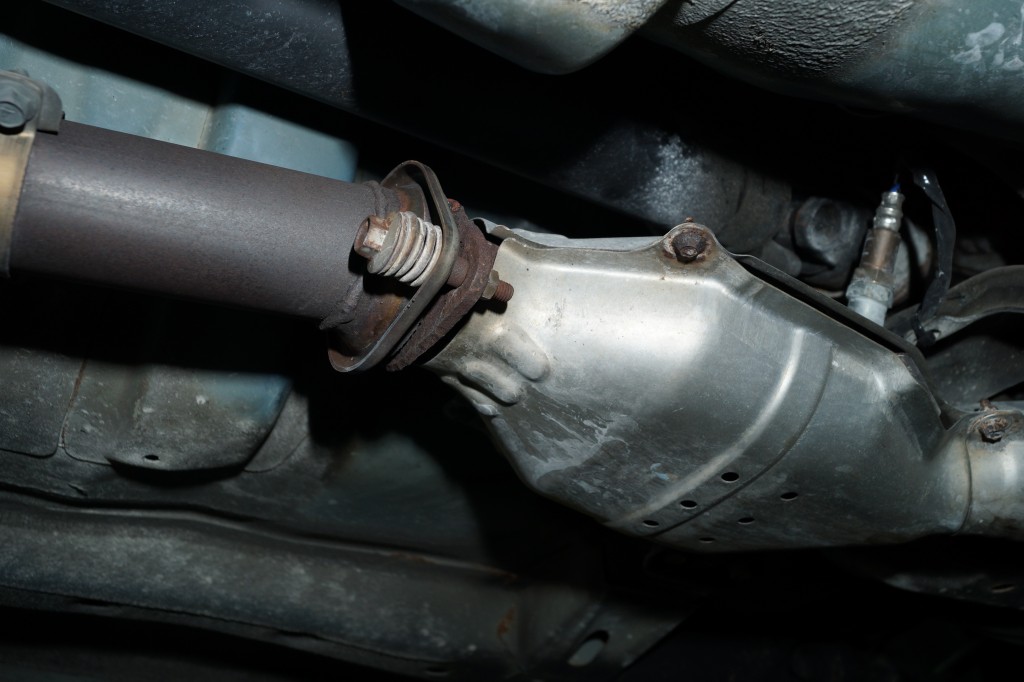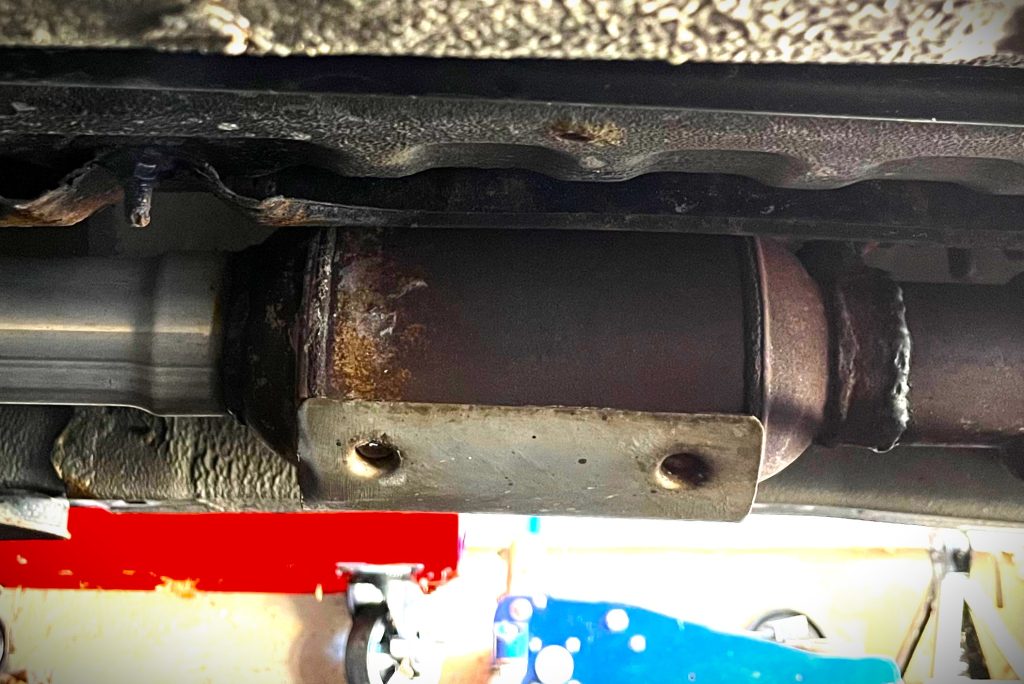Starting in 1975, federal law mandates the use of a catalytic converter in all road-legal passenger cars sold in the United States. Since then, the requirements regarding the use of catalytic converters have expanded to include (but is not limited to) light duty trucks, SUVs, and even several motorcycle models too.
In other words, if you’re buying a vehicle today, there’s a good chance it’s got a catalytic converter.
That also means that it’s illegal to tamper with or otherwise remove your catalytic converter.
Why is it so important? A catalytic converter is part of your vehicle’s emissions control system, and in the name of brevity, essentially changes harmful combustion gasses leaving your engine into (relatively) safer tailpipe emissions. And if you’re playing along at home, less toxic stuff in our air is a good thing.
If you’d like to learn more, here’s a way more in-depth article about catalytic converts: What Does a Catalytic Converter Do?
Here’s the thing though, despite catalytic converter design improving significantly since the 1970s, still today the myth persists that a catalytic converter can hinder engine performance. Not only is that not true, nowadays a good catalytic converter is more effective than ever in mitigating dangerous tailpipe emissions.
Regardless of the negative impacts, gearheads are often tempted to remove the cat, which leads us to the all-important question…
Can You Drive a Car or Truck Without A Catalytic Converter?
1. The Legal Aspect
For starters, vehicles made prior to the 1975 catalytic converter mandate are excluded from the federal law requiring a catalytic converter. So if you’ve got a vehicle made in 1974 or earlier, than you’ll likely have an exemption.
BUT! If your car was made after 1974, then you should not remove its federally-mandated catalytic converter for street use.
As a general rule, emissions equipment exclusions typically follow an OE guideline. In other words, a vehicle should be equipped with all the emissions-related equipment that it came with from the factory. That not only includes the catalytic converter, but also things like air injector pumps and PCV systems.
But the EPA is pretty darn clear on the topic of removing your cats:
“Under federal law, catalytic converters may not be removed and replaced with ‘converter replacement pipes’ by any person. The 1990 Clean Air Act Amendments even prohibit private individuals from installing ‘converter replacement pipes’ on their own vehicles. Anyone who installs such pipes would violate section 203(a)(3)(A) and (B) of the Clean Air Act.”
You can get more insight on the topic in this memo direct from the EPA.
In short, if your car or truck had a catalytic converter from the factory, then it should remain installed.

Another thing to consider: If you’re the type of gearhead who likes to buy and sell cars pretty regularly, then tampering with the emissions system can turn-off a lot of buyers and make your vehicle difficult to title/register in the future—especially if you’re selling to an out-of-state buyer.
2. The Performance Aspect
We touched on this briefly, but if you’re considering removing your catalytic converter for improved performance, then in all likelihood you won’t see much benefit.
More importantly, since engines are precisely tuned from the factory with the emissions systems installed, you might actually see a decrease in performance if you remove it—and not just on the dyno, in general drivability as well, since your ECU might struggle to recalibrate your air/fuel mix. That may also result in tough-to-solve check engine lights and other ECU-related hurdles like “limp mode” safeguards.
Even for an older vehicle that may have had a somewhat restrictive catalytic converter from, say, 30ish years ago, a modern replacement one will flow significantly better too. There’s really is no drawback to keeping (or upgrading) a catalytic converter nowadays.
To put it another way, even from a technical perspective, it’s still not a good idea to remove your catalytic converter.

We got an earful all about the flow characteristics of modern catalytic converters and the science behind exhaust system design from our pal Rich Waitas over at Magnaflow. You can get the whole interview from The OnAllCylinders Podcast below, but in a nutshell, he explained that modern cats have little to no impact on overall engine performance.
Should Your Drive a Vehicle with the Catalytic Converter Removed?
Now that we’ve talked about if you “can” do it, let’s discuss if you “should” do it.
And that’s a far more simple proposition for us: If your vehicle came with one from the factory, the answer is no.
Admittedly, that’s just our editorial opinion, but it’s based on sound logic: Not only is it illegal for 1975+ so-equipped vehicles in the United States, there’s no significant performance benefit.
All told, when you consider a catalytic converter effectively helps reduce the amount of toxic tailpipe emissions a vehicle expels, we struggle to see an upside to removing it.
***
Exhaust systems are far more than just a jumble of pipes under your vehicle. Picking the best exhaust system for your specific application can be a complex, nuanced process. The good news is, if you know what your expectations are, then picking the right aftermarket exhaust becomes really easy.
To help you out, we’ve got oodles (yes, oodles) of articles and tech stories on exhaust systems. If you’re in the market for an exhaust system upgrade, here are some good articles to check out:
- Exhaust Scavenging, Explained
- A Beginner’s Guide to Aftermarket Exhaust Systems
- How To Choose an Aftermarket Exhaust System
- An Introduction to Exhaust System Components
- How Does an Exhaust Pipe Affect Engine Performance?
- How Much Horsepower Does a Dual Exhaust Add?
- What is the Purpose of a Crossover Pipe on an Exhaust?

Comments